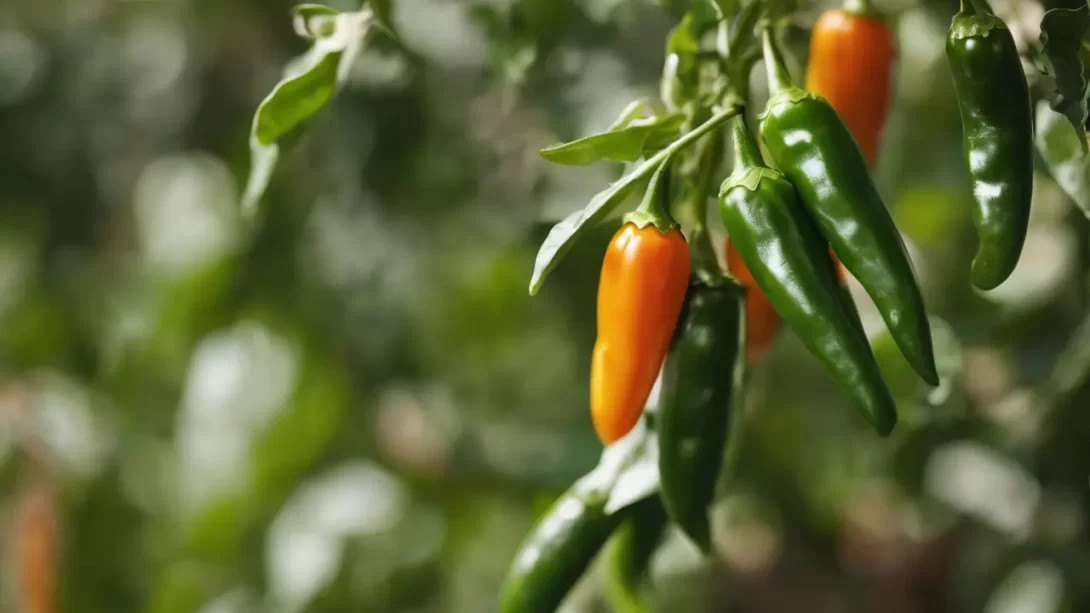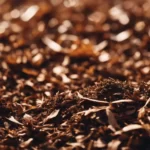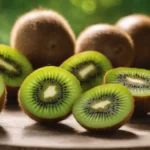Serrano peppers are a staple in many kitchens, revered for their crisp texture and a heat level that’s noticeable yet manageable. Originating from the mountainous regions of Mexico, these peppers are essential in various cuisines, especially Mexican dishes. The key to enjoying the best flavor and heat from Serrano peppers lies in harvesting them at the right time. This article will guide you through understanding when your Serrano peppers are ready to be picked, ensuring you get the most out of these vibrant and spicy fruits.
Serrano peppers, typically smaller and thinner than their cousin, the jalapeño, are known for their bright, biting heat. They are used in a variety of dishes, from salsas to sauces, and can be eaten raw, cooked, or pickled. The timing of the harvest greatly influences their heat level and flavor, making it crucial for gardeners and chefs alike to know when these peppers are at their peak.
The Growth Cycle of Serrano Peppers
The journey of Serrano peppers from seed to fruit is a fascinating process. It begins with germination, which can take anywhere from 7 to 14 days in ideal conditions. The plants then enter a vegetative stage where they develop leaves and stems, followed by the flowering stage. Flowers typically appear in late spring to early summer, depending on the climate.
After the flowering stage, the plants start to set fruit. Serrano peppers typically take about 75 to 80 days from planting to reach maturity. This period can vary depending on factors like climate, soil conditions, and care. Understanding this growth cycle is crucial as it gives gardeners insights into when they can expect their peppers to be ready for harvest.
Identifying the Right Time to Harvest Serrano Peppers
Knowing when to harvest Serrano peppers can be a bit of an art form. Generally, these peppers are ready to pick when they are about 2 to 3 inches long, firm to the touch, and have a bright green hue. Some gardeners prefer to wait until the peppers turn red, which indicates full ripeness and a slightly sweeter, more complex flavor.
The texture and firmness of the pepper are also important indicators. A ripe Serrano pepper should be firm, with a glossy exterior. If the pepper feels soft or looks wrinkled, it might be overripe. On the other hand, if the pepper is too small or feels overly hard, it may need more time to mature. The color transition from green to red is a clear sign of maturity, but peppers can be harvested at any stage depending on personal preference for flavor and heat level.
Harvesting Techniques for Serrano Peppers
Harvesting Serrano peppers correctly is essential to protect both the fruit and the plant. The ideal method is to use a sharp pair of scissors or pruners, cutting the pepper from the plant with a short portion of the stem attached. This method helps prevent damage to the plant and the remaining peppers. It’s important to avoid pulling or twisting the peppers off, as this can harm the plant and reduce future yield.
When harvesting, it’s also advisable to wear gloves, especially if you have sensitive skin or if you’re harvesting a large number of peppers. The capsaicin in Serrano peppers, which gives them their heat, can irritate skin and eyes. Long sleeves and eye protection are additional precautions that can be taken.
Regular harvesting encourages the plant to produce more fruit. Therefore, even if you don’t need the peppers immediately, it’s beneficial to pick them when they’re ready. This practice keeps the plants healthy and productive throughout the growing season.
Post-Harvest Handling and Storage
Once harvested, handling and storing Serrano peppers correctly is key to preserving their flavor and heat. If you’re not using the peppers right away, they can be stored in the refrigerator. Place them in a paper bag or wrap them in paper towels to absorb any moisture, and they should last for a week or two.
For longer storage, Serrano peppers can be dried, pickled, or frozen. Drying is a popular method, especially for making chili flakes or powder. Hang the peppers in a dry, well-ventilated area, or use a dehydrator. Pickling is another great way to preserve Serranos, adding a tangy flavor that complements their heat. Freezing is the simplest method; just wash, dry, and place the peppers in a freezer bag.
Each storage method has its own impact on the peppers. Drying intensifies the heat, while pickling and freezing may slightly mellow it. Regardless of the method, proper storage ensures that you can enjoy your Serrano peppers for months to come.
Troubleshooting Common Issues in Growing and Harvesting Serranos
Growing Serrano peppers can sometimes present challenges. One common issue is determining the ripeness of the pepper. Overripe peppers may become soft and lose their crisp texture, while underripe peppers might lack the desired heat and flavor. Regular monitoring and understanding the signs of ripeness can help mitigate these issues.
Pests and diseases can also affect the timing and quality of your harvest. Common pests like aphids and pepper weevils can damage the fruit, while diseases like blossom end rot can ruin the peppers. Implementing good gardening practices, such as proper spacing, adequate watering, and using organic pest control methods, can help keep these problems at bay.
Conclusion
In summary, harvesting Serrano peppers at the right time is crucial for getting the most out of your plants, both in terms of flavor and yield. Remember, these peppers are typically ready when they are firm, glossy, and about 2 to 3 inches long. While they can be picked when green, waiting until they turn red can offer a different flavor profile. The proper technique in harvesting, handling, and storing these peppers not only ensures their best quality but also promotes the health and productivity of the plant.
Gardening is a learning experience, and growing Serrano peppers is no exception. Whether you are a seasoned gardener or a beginner, each season offers new insights into the nuances of plant care and harvesting. By understanding the growth cycle, identifying the right time for harvest, and following the best practices for post-harvest handling, you can enjoy a bountiful and spicy harvest.
Experimenting with different methods of preserving Serrano peppers, such as drying, pickling, or freezing, can also be a fun and rewarding process. Each method offers a unique way to savor the flavors of your garden long after the growing season has ended.
Embrace the challenges and joys of growing Serrano peppers. With the right knowledge and a bit of care, these vibrant and spicy fruits can be a rewarding addition to your garden and your kitchen. Enjoy the fruits of your labor in a variety of dishes, and appreciate the spicy kick that homegrown Serrano peppers bring to your meals.




